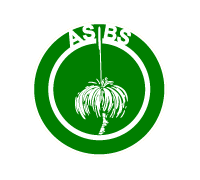
ASBS Newsletter – Book Review
Would a panicle by any other name smell as sweet?
Die Infloreszenzen Band II, Teil 2,
Monotele und polytele Synfloreszenzen
Written by Focko Weberling & Wilhelm Troll.
(From ASBS Newsletter Number 100, September 1999)
Gustav Fischer Verlag, Jena, Germany 1998 DEM 238
Systematics demands the recognition of homologous structures in different taxa, so that synapomorphies characterising evolutionary lineages can be distinguished. For complex structures such as many inflorescences, we need to determine whether differences are related to position on the plant or location within a repeated growth unit, or to the extent of replication of processes such as the initiation of floral buds. Further, are structures suppressed or proliferated, and how do they relate in form and timing to the vegetative growth? Comparative analysis of the structures and their component parts is essential for distinguishing characters to be appropriately defined.
When the late Lawrie Johnson and I sought to compare inflorescences throughout Myrtaceae, we found one school of precise inflorescence description - that of Troll and Weberling. Translating much German text of earlier volumes in this monumental series was rewarded by its precision and logic, unmatched in the interpretation of inflorescences by other authors. The contrast with the generally muddled descriptions in the English language is well shown in the clear structural definition of 'panicle', so often applied elsewhere to any highly floriferous and much-branched inflorescence, whatever its underlying structure.
As explained in the Foreword to this volume, Focko Weberling made a promise to his late teacher, Wilhelm Troll, that he would continue Troll's work, and this he has faithfully and energetically done. Weberling has used some illustrations and notes from Troll's draft manuscript, but deals here with families that he has himself studied in detail.
In our work on Myrtaceae, we found the Trollian precision to be essential, but we argued that Troll's concepts were influenced by the frequent use of reduced, herbaceous plants of the Northern Hemisphere as the norm, giving insufficient attention to their woody, often tropical, relatives. Some of the same emphasis continues, since the families treated are Rubiaceae, Asclepiadaceae, Polemoniaceae, Convolvulaceae, Campanulaceae, Fabaceae, Lamiaceae, Scrophulariaceae, and Plantaginaceae. There are also brief updates on changes to the classification of the following families treated in earlier volumes: Papaveraceae, Ranunculaceae, Crassulaceae, Rosaceae, Lythraceae, Thymelaeaceae, Caprifoliaceae and Apiaceae. In Rubiaceae and Fabaceae, in particular, many woody examples are given (including various Australian Faboideae and Acacia), but herbs dominate the volume. Indeed in the Foreword, Weberling explains that a whole volume on woody groups was originally planned, but that such studies are not far enough advanced for inclusion here.
There are general discussions of the characteristics of monotelic and polytelic synflorescences and the derivation of the latter type from the former. The final chapter, dealing with the general phylogeny of inflorescences is, however, extremely brief. In scarcely more than a page of text, the proposition is developed that single flowers terminating leafy shoots have been considered to be primitive, but that many inflorescence types are reductions from a panicle. Also that, despite the studies made of fossil flowers, there is still much to learn about the origin of the flower and the steps between the flower and multiflorous inflorescences with axes terminated by flowers.
If you wish to describe and compare inflorescence structures precisely, then encourage your library to buy this important volume. If the German language is not your strength, study the abundant and excellent illustrations to narrow-down the amount of translation needed by finding useful comparative examples illustrated, and often diagrams indicating the directions in which evolutionary change is considered to have occurred. Meanwhile, live in the hope that the precision of these descriptions and interpretations may one day be combined with the phylogenetic understanding of flowering plants that has recently emerged from DNA studies, and also encourage the development of interpretations of inflorescence structures based on according equal rights to the largely woody component of floras of the tropics and Southern Hemisphere.
Reviewer: Barbara Briggs
National Herbarium of New South Wales
Royal Botanic Gardens, Sydney 2000
bgb@rbgsyd.gov.au